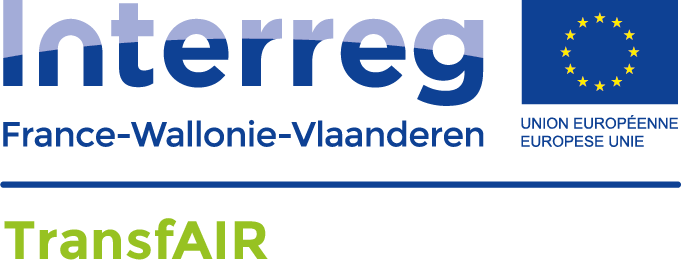TransfAIR: tools for harmonised air quality management in the border region of Flanders, Hauts-de-France and Wallonia
TransfAIR: What and why
Directive 2008/50/EC establishes air quality requirements with the goal of improving human health and environmental quality. The Directive also requires that the public be informed about air quality. How this is to be done, however, is the choice of the Member State itself.
In the cross-border area involved in the project, each individual region (Flanders, Hauts-de-France and Wallonia) suffers from the same type of air pollution, while each region maintains its own methodologies and tools for managing that air quality. Because the European Air Quality Directive does not provide any information and/or alert thresholds for particulate matter (PM2.5 and PM10), France and Belgium maintain different thresholds. This leads to differences in how air quality information is provided to citizens within the cross-border zone. Smog alarms are not triggered based on the same concentration levels. The short-term measures taken during smog alerts are also not the same. This situation may cause confusion and reduced public confidence in the air quality information provided in these regions. It may also be a disincentive for citizens to also take their own actions to further improve air quality.
Purpose of the TransfAIR project
To improve the flow of air quality information to residents in this cross-border area, the project partners, actors and/or air quality managers in the three regions decided to combine their efforts. They will share their expertise and work to complement one another in informing the population about air quality in a harmonised way.
The establishment of a platform for data sharing and collection, the dissemination of clear and comparable information about the study area and connective communication will better inform citizens about air quality in the region. Ultimately, this should give rise to citizen engagement in contributing to further improving air quality in the region.
In addition to exchanging information and harmonising technical and communication tools around air quality in this cross-border region, the project will also provide some new data and insights (emissions, measurements, modelling and forecasts). By involving the population, an awareness process will take place that will encourage citizens to actively participate in the sustainable development of the cross-border region in question.
TransfAIR in Europe
The TransfAIR project is part of the European grant programme INTERREG France-Wallonia-Flanders. The following project partners from France and Belgium are participating in the project.
| Project partners | |
|---|---|
| Belgium |
Flanders Environment Agency Institut Scientifique de Service Public Agence wallonne de l'air et du climat
|
| France | |
Project type: Interreg INTERREG France-Wallonia-Flanders
This project ran from April 2019 through December 2022.



